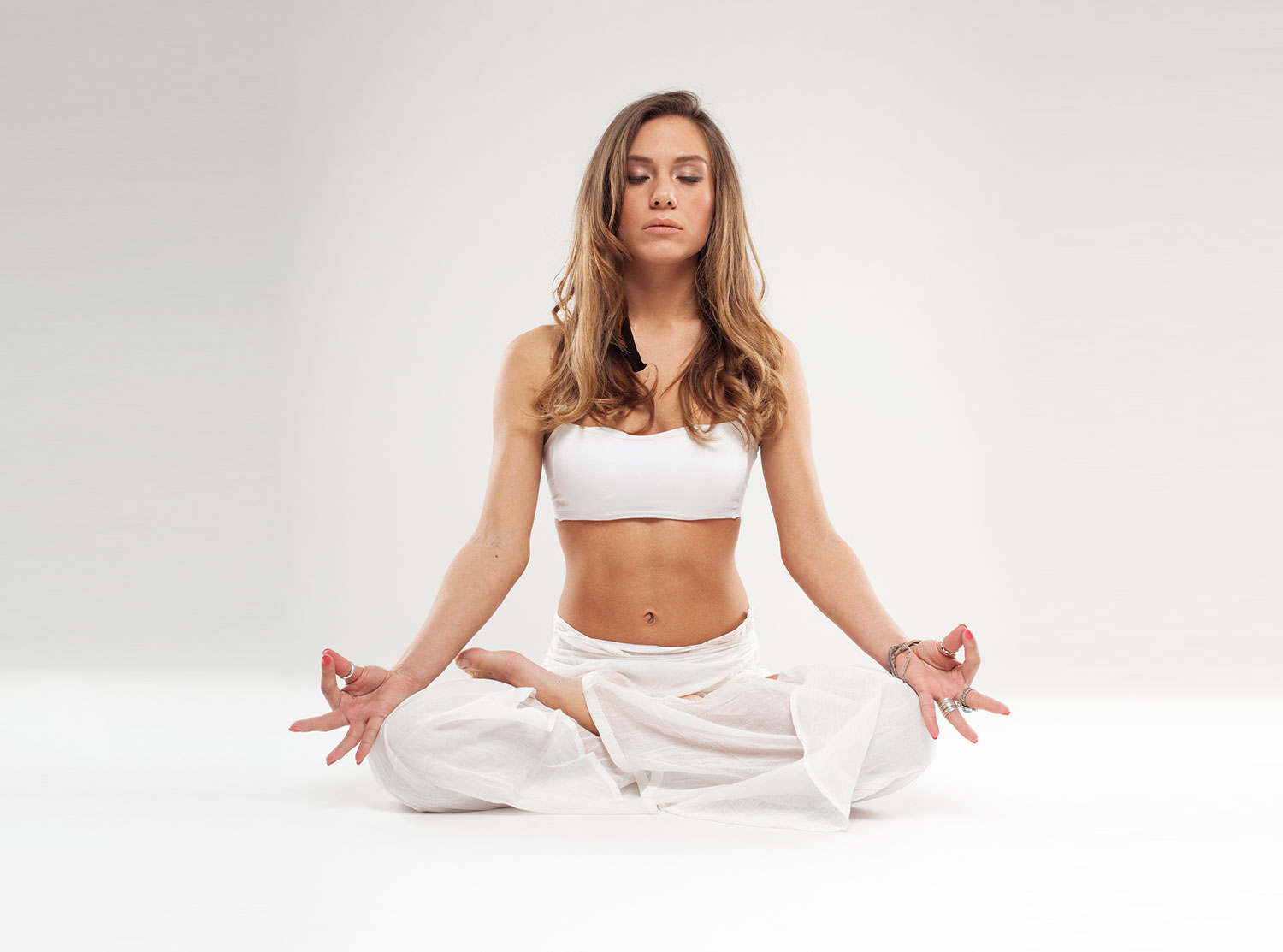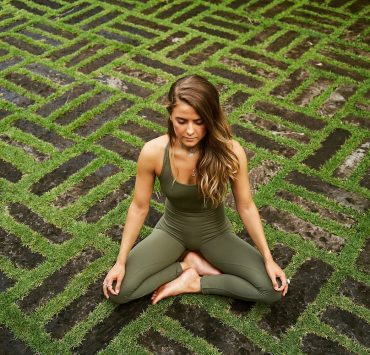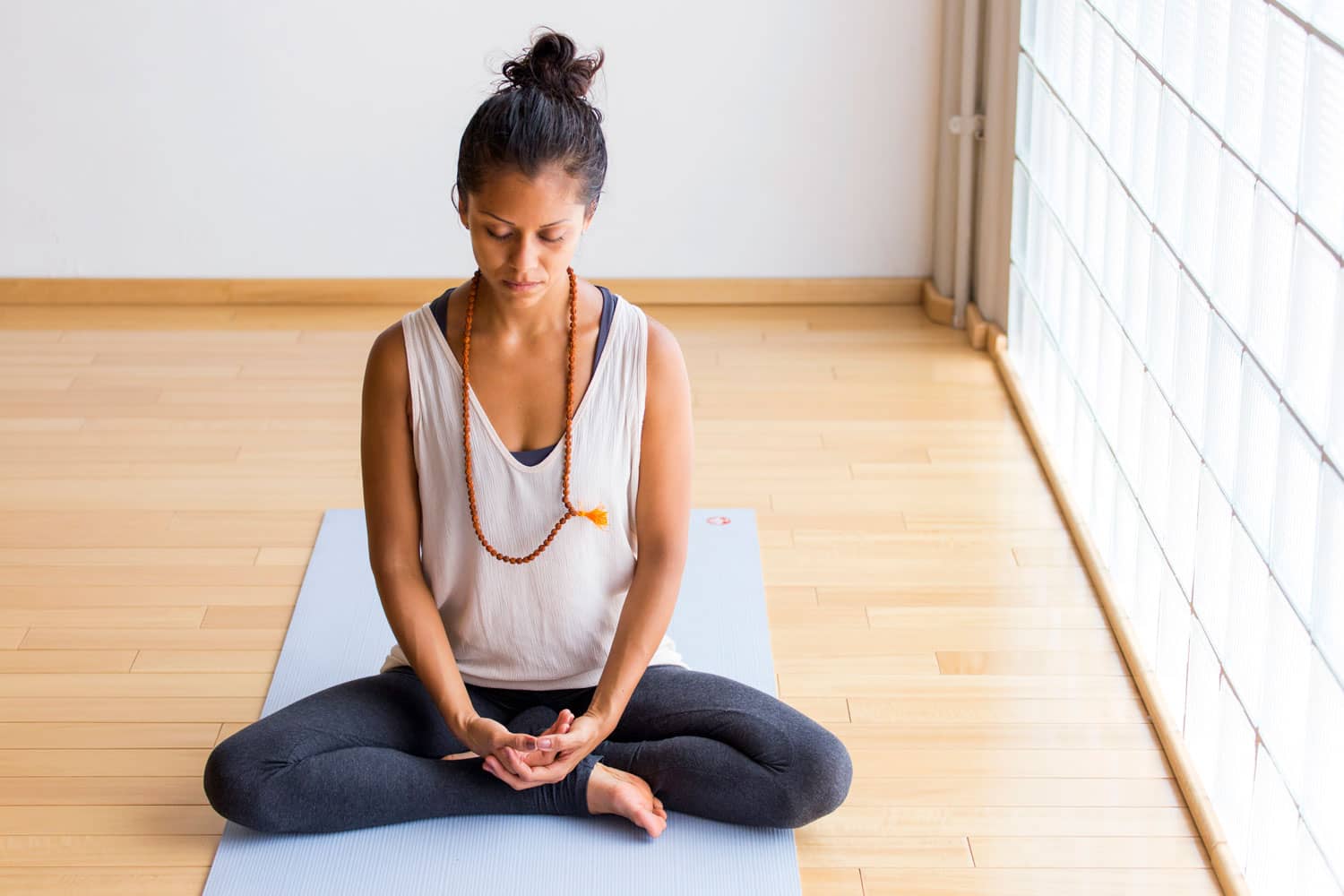
Susan views the world through a lens of spirituality, health,…
Kundalini yoga is a popular style of yoga which combines asana with mantra, pranayama, and other practices to awaken kundalini energy in the subtle or energetic body.
This type of yoga was popularized by Yogi Bhajan who brought it to the United States in 1969. Before then, it is believed that Kundalini Yoga was a secret science and only taught to selected students.
Kundalini Yoga is the science of breaking limitation. Some people say that it can be a dangerous style of yoga to practice, however, just like any physical and spiritual exercise, it must be practised under the guidance of qualified teachers who have undergone years of training and self-process to understand the effects of the energies being awakened.
Some Kundalini Yoga practices may seem alien to outsiders, but every practice in this tradition has a purpose.
What is Kundalini?

Kundalini is an energy that lies dormant in the subtle at the base of the spine. When it is activated, it rises up the central channel passing through seven major chakras, or energy points.
It is often symbolized by a coiled up snake when it is dormant. Sadghuru, of Isha Yoga, explained that this is because, like a coiled snaked, it is very difficult to perceive Kundalini when it is not moving.
By practicing specific asanas, pranayamas, mantras, and meditation regularly, Kundalini Yogis believe that you can raise your Kundalini energy and awaken each of your chakra centers and in effect, raise yourself to a higher level of consciousness.
Some Kundalini Teachers say that even just 5 minutes of regular, dedicated yoga practice a day is enough to observe beneficial changes in your life due to the awakening of Kundalini in the subtle body.
Awakening the Snake and Balancing the Chakras

A misunderstanding of the Kundalini rising experience is that it is something that happens to you. But traditionally, Kundalini evergy is actually your identity. Its rising, or awakening, is not so much an experience, but rather, it is like turning on a light in a room. Suddenly, you are able to clearly see and recognize everything that was already inside. It was never separate or outside of you.
As Kundalini rises, it passes seven major chakra points located in the central channel of the subtle body along the spine. Each of these chakra points are a window into the self with different characteristics that manifest when they are either activated or stagnant.
— Muladhara aka Root Chakra. Connected to basic needs for survival. This energy center is rooted in trust and security.
— Svadhisthana aka Sacral Chakra. This energy center is known as the “seat of the self.” It is where creative energy flows and is connected to the moon, sensuality, and reproductive energy.
— Manipura aka Solar Plexus Chakra. This is the energy center of directed action and movement.
— Anahatha aka Heart Chakra. The emotional energy center of the heart is the bridge between the three lower and three higher chakras. It flows with compassion.
— Vishuddha aka Throat Chakra. Clarity and truth rule this energy center. By expressing and listening to truths, the illusions of the world begin to unravel.
— Ajna aka Third Eye Chakra. Connected to intuition and breaking free of the ego, this energy center allows us to see the world and ourselves for what we are: the Truth.
— Sahasrara aka Crown Chakra. This is the energy center of transcendence.
Who is Yogi Bhajan?

Yohi Bhajan was born Harbhajan Singh Puri in 1926. His village was in a part of India that became Pakistan in the partition of 1948. He was eight years old when he began training with an enlightened yoga teacher named Sant Hazara Singh. This same teacher proclaimed him to be an Master of Kundalini Yoga when he was sixteen and a half.
All throughout his life, he taught yoga to people from all walks of life. But it was when he moved to Canada to teach yoga at Toronto University, and then to Los Angeles in the United States, he broke with centuries of tradition by sharing the secrets to the science of Kundalini Yoga by teaching it publicly.
He particularly realized that the hippies of the 60s and 70s were attempting to find a path towards higher consciousness through drugs and psychedelics. But he offered Kundalini yoga as a science that could get them there without drugs and while also rebuilding their nervous systems.
Yogi Bhajan legally changed his name to Harbhajan Singh Khalsa Yogiji when he became a US citizen in 1976.
In addition to introducing the world to Kundalini Yoga, he was also an entrepreneur, a proponent of women’s rights, and established many programs to help drug addicts.
Many described him as a spiritual leader who felt comfortable “in the pulpit, the podium, the board room, the living room, or sitting on the grass in a park,.” His aim was teach people about Kundalini yoga and train them to become teachers themselves.
Today, Kundalini Yoga is taught all over the world and research shows that it does benefit the nervous system and even supports mental health therapies. In the UK, a study in 2016 showed that children in the foster care system and their caregivers benefited from a regular practice of Kundalini Yoga.
What to Expect in a Kundalini Class

Most certified Kundalini yoga teachers and followers of Yogi Bhajan wear all white and a turban. Each class is structured very specifically and teachers do not alter the sequences because this is a tried and true science designed for specific outcomes.
The six-part teaching structure of a Kundalini Yoga class is as follows:
— Adi Mantra (Ong Namo Guru Dev Namo)
— Pranayama
— The Kriya (asana and exercises)
— Relaxation
— Meditation
— Long Sat Nams (“Truth is my identity”)
Classes are usually an hour to 90 minutes long and work on the physical, mental, and energetic levels of the body.
Regular practice will strengthen the body physically, mobilize your joints and improve circulation, ease anxiety and stress, improve body functions and immunity, and detoxify your system, and induce your natural state of peace and joy.
Do I Have to Wear White And a Turban?

Teachers and many regular practitioners of Kundalini yoga opt to wear all white and white turbans. Although this is not a requirement to go to a Kundalini yoga class, there are very good reasons behind this practice.
Head coverings are often signs of devotion to a spiritual path. Sikhs, Muslims, Jews, and other religions wear various forms of head or hair coverings either in daily life or during religious services.
Yogi Bhajan taught that properly tied turbans help create natural cranial adjustments which stabilize the small bones in the skull and affect our nervous system and electromagnetic field. Many proponents of turban-wearing share that the light pressure created by it helps give them a sense of calm.
It is also believed that head coverings help focus the energy on the Ajna chakra or Third Eye where the pineal gland is located. This helps clarify thoughts and expand intuition.
Wearing white is believed to enhance your auric field. Yogi Bhajan taught that your aura, located in the subtle body, extends nine feet around your physical body. But wearing all white helps to extend your aura by an extra foot, thereby spreading your energy further and also protecting you from energies that could create dissonance with your own.
Health Benefits of Kundalini Yoga

Kundalini Yoga is one of the most studied yoga styles. Yogi Bhajan described it as a science and encouraged his student to dive into research and study into how it benefits practitioners spiritually, mentally, and physically.
Some of the most promising research concerning Kundalini Yoga show how it can be effective in helping those with mental health issues and psychiatric disorders.
The Journal of Complimentary and Alternative Medicine published a study in 2004 which showed how Kundalini yoga was effective for patients with sleep disorders, obsessive compulsive disorder, anxiety disorder, phobias, major depressive disorders, addictive and substance abuse disorders, dyslexia, insomnia, grief, and other issues.
In 2017, the International Journal of Yoga published a study which found that after three months of regular practice, Kundalini Yoga caused a small but significant decrease in stress levels by affecting salivary cortisol levels.
Another study from 2001 found that advanced mediators from Kundalini Yoga had more alpha EEG activity in their brains immediately following practice and experienced a decrease in respiration rate during meditation. This helps calm the body and cause positive changes in the brain which may defend against stress.
Some Kundalini Yoga Exercises to Try at Home
Kundalini Yoga classes are best practiced under the guidance of a teacher when you begin. The energies that move due to the mantras, mudras, breathwork, asana, and exercises involved in Kundalini yoga have been proven to be effective and many may find their “Kundalini Awakening” challenging to integrate when they are unprepared for it.
But here are a few pranayama and asana exercises you can try to give you a taste of what to expect at a Kundalini Yoga class.
Adi Mantra

Chant the Adi Mantra at least 3 to five times: “Ong Namo Guru Dev Namo”
This mantra will allow you to tune in to the divine flow and links you to all Kundalini yoga teachers and practitioners and even to Yogi Bhajan and the long line of teachers before him who transmitted these teachings.
Pranayama (Kundalini “Breath of Fire”)

Sit comfortably with your hands on your knees. Put your fingers into Gyan Mudra by letting the tips of your index fingers and thumbs touch. Close your eyes and focus on your Third Eye. Breathe rapidly with equal lengths of in and out breaths. Repeat for 3 to 7 minutes.
“Ego Eradicator” / Arms Overhead

From a comfortable seated position, raise your arms over head and shake them. Shake your entire upper body, arms and head as well. This helps shake away fears and anxiety and increases mobility of your spine.
Stretch Pose

Lay on your back with heels together and toes pointed. Lift your feet about 6 inches off the ground and keep your gaze on your toes. Lift your arms with palms facing each other. Hold this pose for 1 to 3 minutes while doing the Breath of Fire pranayama.
Camel Pose

Kneel with your knees hip width distance apart. Place your hands on the small of your back and use them to help support you as you push your hips forward. Look up and backwards, relaxing your head back if you do not have any neck issues. If possible, arch backwards far enough to hold onto your heels with your hands.
Relaxation and Meditation

Kundalini yoga can be very rigorous, so spend a few minutes is quiet relaxation and meditation after the Kriyas. Lay is Savasana or Corpse Pose for at least 10 to 15 minutes. Slowly rise and sit in quiet meditation, with or without a personal mantra for an additional 5 to 20 minutes.
Sat Nam

Every Kundalini Yoga class ends with the mantra / affirmation: Sat Nam. Either mentally or out loud, say “Sat” when you inhale and “Naam” when you exhale. This mantra is from the ancient Sikh language called Gurmukhi and means “Truth is my essence.”
Conclusion
Kundalini yoga is an ancient and rewarding practice. In addition to many scientifically proven benefits, the purity of tradition followed by certified Kundalini Yoga teachers and followers of Yogi Bhajan give a sense of community all over the world to those who practice this style of yoga.
By combining asana, pranayama, meditation, mudra, and understanding of the subtle anatomy and energetic body, Yogi Bhajan brought this ancient secret science to the west in the hope that it would help raise the consciousness of humanity.
Today, practitioners all over the globe follow this tradition and continue to teach Kundalini yoga for the betterment of the world.
What's Your Reaction?
Susan views the world through a lens of spirituality, health, and compassion. Her positive outlook on life shines through her writing, which is heavily focused on yogic living, meditation, and conscious eating.














